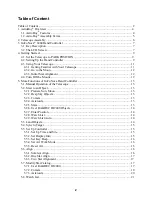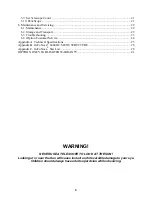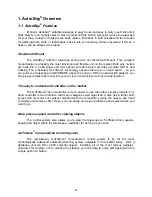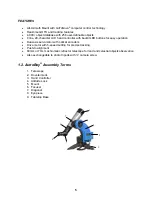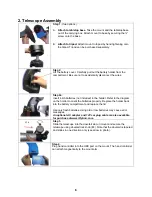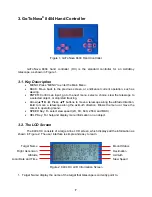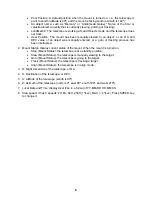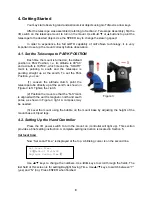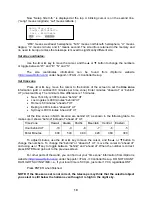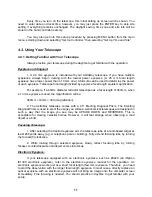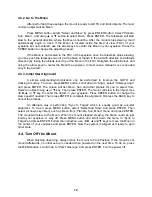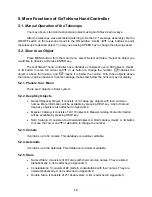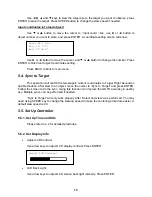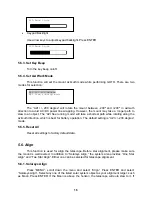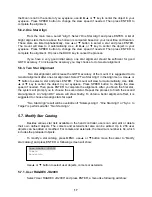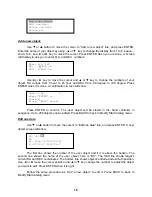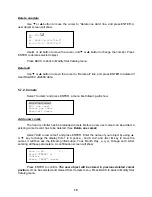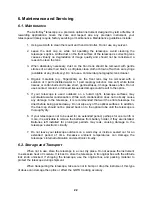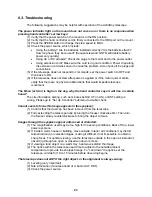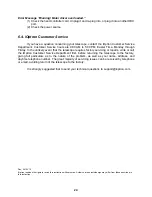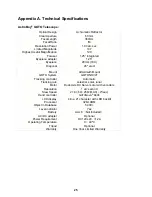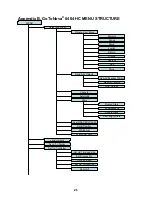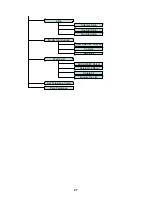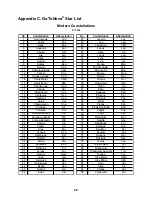
13
5. More Functions of GoToNova Hand Controller
5.1. Manual Operation of the Telescope
You may observe land and astronomical objects using GoToNova’s arrow keys.
After the telescope was assembled (referring to Section 2. Telescope Assembly), flip the
ON/OFF switch on the telescope mount to the ON position. Use
►
,
◄
,
▼
or
▲
buttons to point
the telescope to desired object. You may need using SPEED key to change the slewing speed.
5.2. Slew to an Object
Press MENU button, from the main menu, select “Select and Slew.” Select an object you
would like to observe and press ENTER key.
The GoToNova
®
hand controller has a database consists of over 4,000 objects. Use
►
or
◄
button to move the cursor and
▼
or
▲
button to change the number. “
”
indicates the
object is above the horizon, and “
”
means it is below the horizon. Only those objects above
the horizon can be observed. In some catalogs, those stars below the horizon may not display.
5.2.1. Planets, Sun, Moon
There are 9 objects in Solar system.
5.2.2. Deep Sky Objects
•
Named Deepsky Object: It consists of 137 deep sky objects with their common
names. More information will be available by pressing HELP key. A list of named
deep sky objects is also attached in Appendix C.
•
Messier Catalog: It consists of all 110 objects in Messier catalog. More information
will be available by pressing HELP key.
•
NGC Catalog: It consists a few thousand objects in NGC catalog. Use
►
or
◄
button
to move the cursor and
▼
or
▲
button to change the number.
5.2.3. Comets
It contains up to 64 comets. This database is customer editable.
5.2.4. Asteroids
It contains up to 64 asteroids. This database is customer editable.
5.2.5. Stars
•
Named Stars: It consists of 191 stars with their common names. They are listed
alphabetically. A list is attached in Appendix C.
•
Constellations: It consists of 88 modern constellations with their names. They are
listed alphabetically. A list is attached in Appendix C.
•
Double Stars: It consists of 211 double stars. A list is attached in Appendix C.


